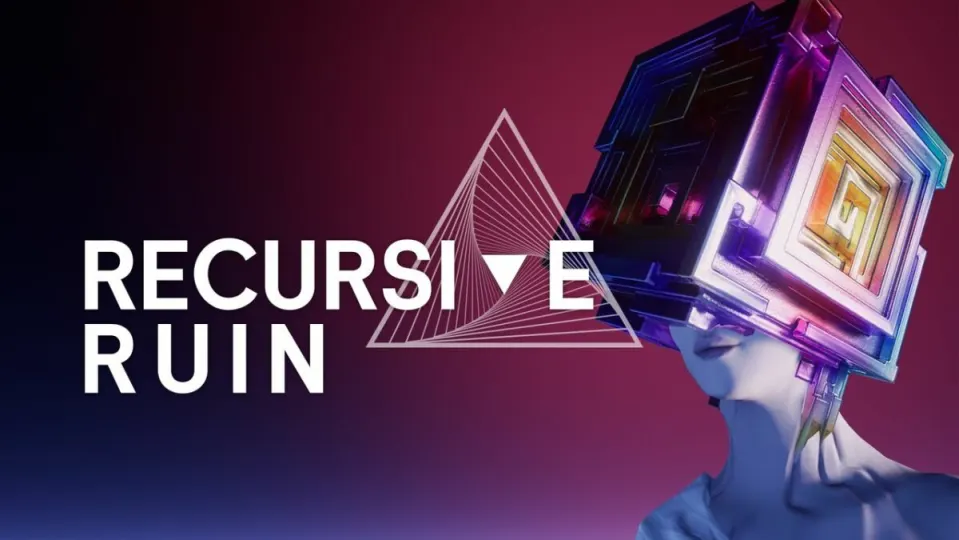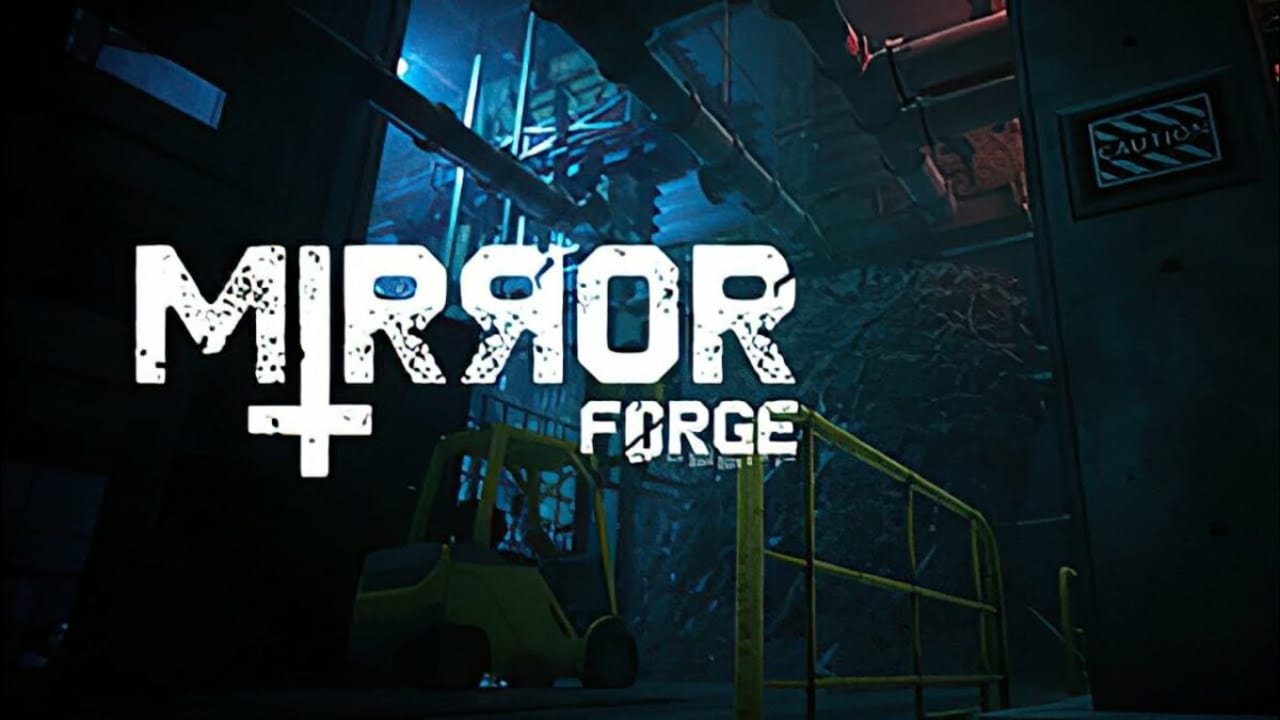Recursive Ruin is a kaleidoscopic puzzle adventure from a first-person perspective. Bit Riot developed it, with Iceberg Interactive releasing it on May 18, 2022. It takes you on a journey of an artist who’s coming to terms with some grief that’s entered his life. When he enters Infinite Realms, he has the chance to save the immersive world and himself.
You can play a free demo of Recursive Ruin to get a taste of what it’s like. In this review, I’ll explain the full extent of the game, what the puzzle elements are like, and how much I enjoyed the mechanics and visuals. Stay tuned for an exciting adventure into another universe.
Recursive Ruin presents an immersive story
The basis of Recursive Ruin delivers an intense and immersive story that will pull at your heartstrings. Within the many puzzles and worlds, you’ll unlock memories and reasons for the character’s grief. Here’s my review of the story elements.
Memories of a dark past
You begin your Recursive Ruin journey in an apartment with a massive television, furniture, and an assortment of odds and ends. As you move around in the first-person perspective, you’ll see small icons for items you can inspect. When you click on them, your character tells you interesting information about them.
It seems there are some memories you’d like to keep hidden. There’s a panel on the wall that unlocks them in bits and pieces between levels. As you open them, you realize how much pain and grief the main character has had to deal with in his life. It’s a sad tale, but I won’t spoil it for you here. The main warning I want to provide is that the memories contain sensitive content that not everyone will enjoy.
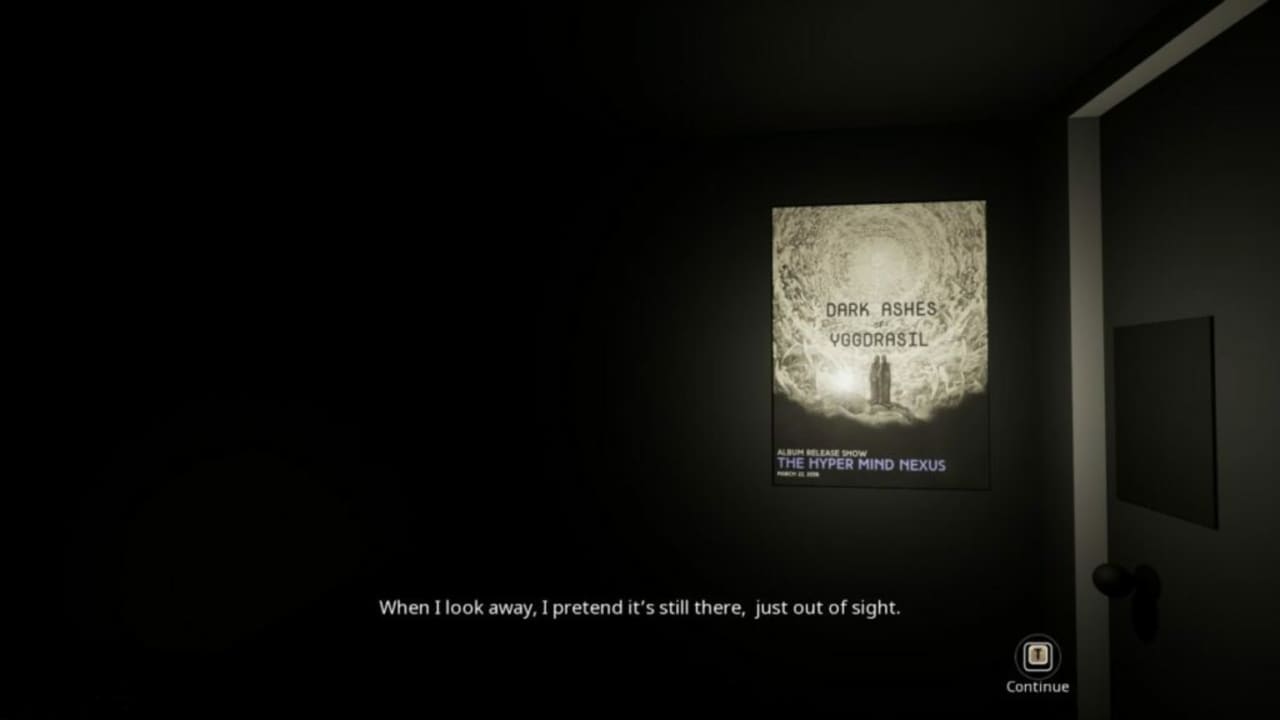
Entering and escaping the Infinite Realms
When the time is right, you can play the game Recursive Ruin on your television. It’s a game within a game mechanic that I enjoyed. It’s almost like a virtual reality realm, but it feels like you’re in a different universe that’s real and not a game. As soon as you complete a level, you return to your apartment to explore your memories again.
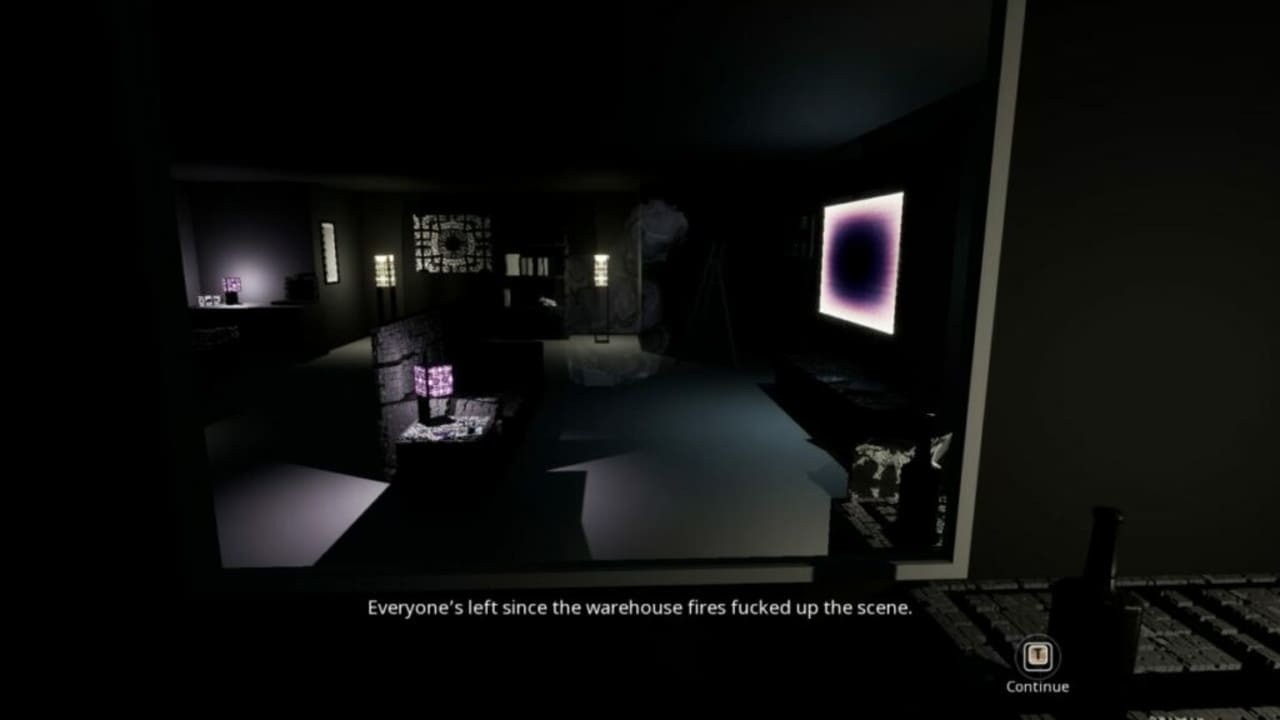
Saving the world from Ichor
It appears as though the place known as Infinite Realms needs your help. There’s an entity called Ichor that is destroying reality as we know it. Much like your fragile mind, you’ll need to put the pieces back together and solve the puzzles to make everything right again.

Speaking to your cat
You’ll notice a small wooden home for a cat called Behemoth in your apartment. Surprisingly, he speaks to you, sometimes in deep tones. While shrouded in mystery in the beginning, chatting to him will help you unravel your mind and the secrets of Infinite Realms. I quite enjoyed the conversations we had.
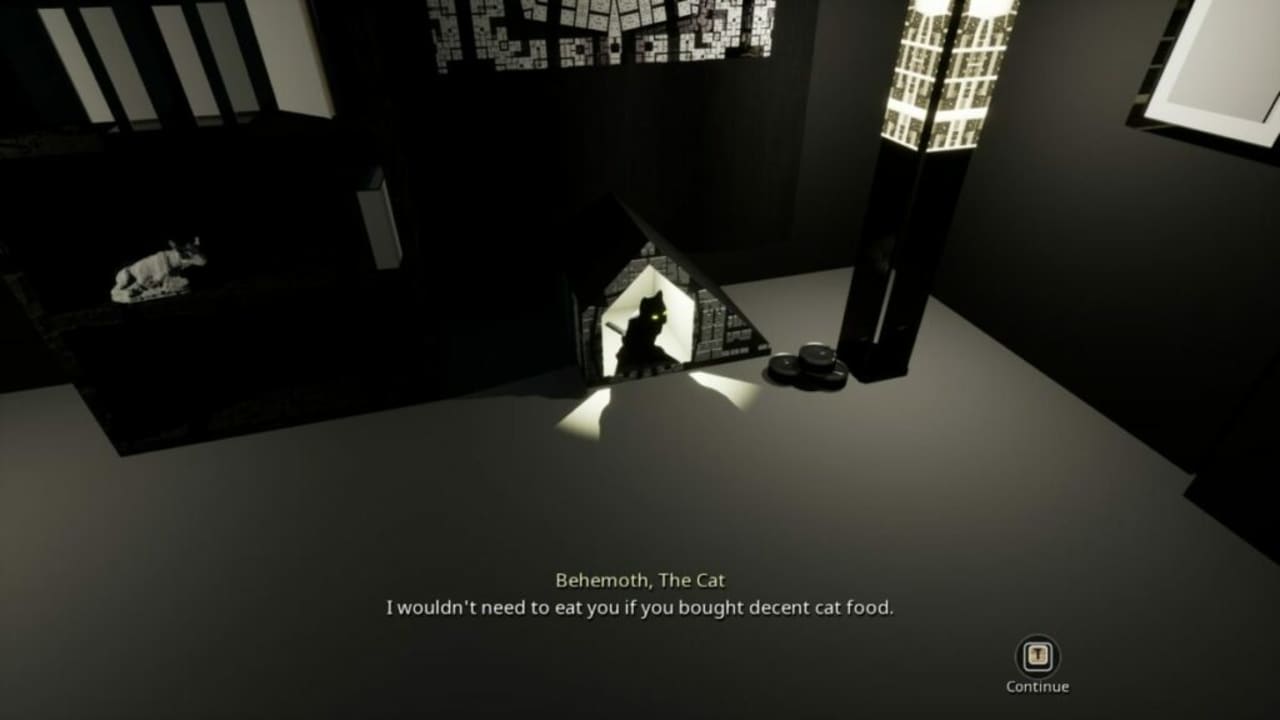
How long to play Recursive Ruin
The gameplay length for Recursive Ruin depends on how quickly you can solve the puzzles. Once you have the hang of it, it can take you about 6 to 8 hours to complete. The main menu has the option to select levels to play them again if you wish, but it won’t reduce the overall game time.
The interactive mechanics of Recursive Ruin
I’ve only mentioned the story elements for my Recursive Ruin above without spoiling the actual plot for you. There’s a lot to uncover, but I’d like to leave you with the chance of doing so. For now, here’s an overview of what it was like playing the game.
Learning how the puzzles work in Recursive Ruin
Recursive Ruin has an engaging way of showing you how the puzzles work. Not only will it show you the controls when new mechanics appear, but some of the NPCs will also guide you. If you get stuck along the way, an information panel appears on a surface nearby to give you a hint. It’s an outstanding way for you to choose if you want a clue or decide to solve the puzzle without one.
I love the way Recursive Ruin lays out its puzzles. You won’t find small items to move around and place in other objects. Instead, the entire world at that level is a puzzle, and you’ll need to find creative ways to reach new areas and engage with items. It’s similar to how Mirror Forge and Myst V: End of Ages play out, where the whole stage is a puzzle.

Expanding and collapsing
One of the first puzzle mechanics you’ll find in Recursive Ruin is expanding and collapsing. Basically, it’s like breathing in and out, but on a planetary scale. When you expand, the world breaks apart and grows outwards, while collapsing brings it back in.
You’ll need to experiment with this foundation if you want to succeed and enter new areas. It’s like breaking apart a Rubic’s Cube and putting it back together.
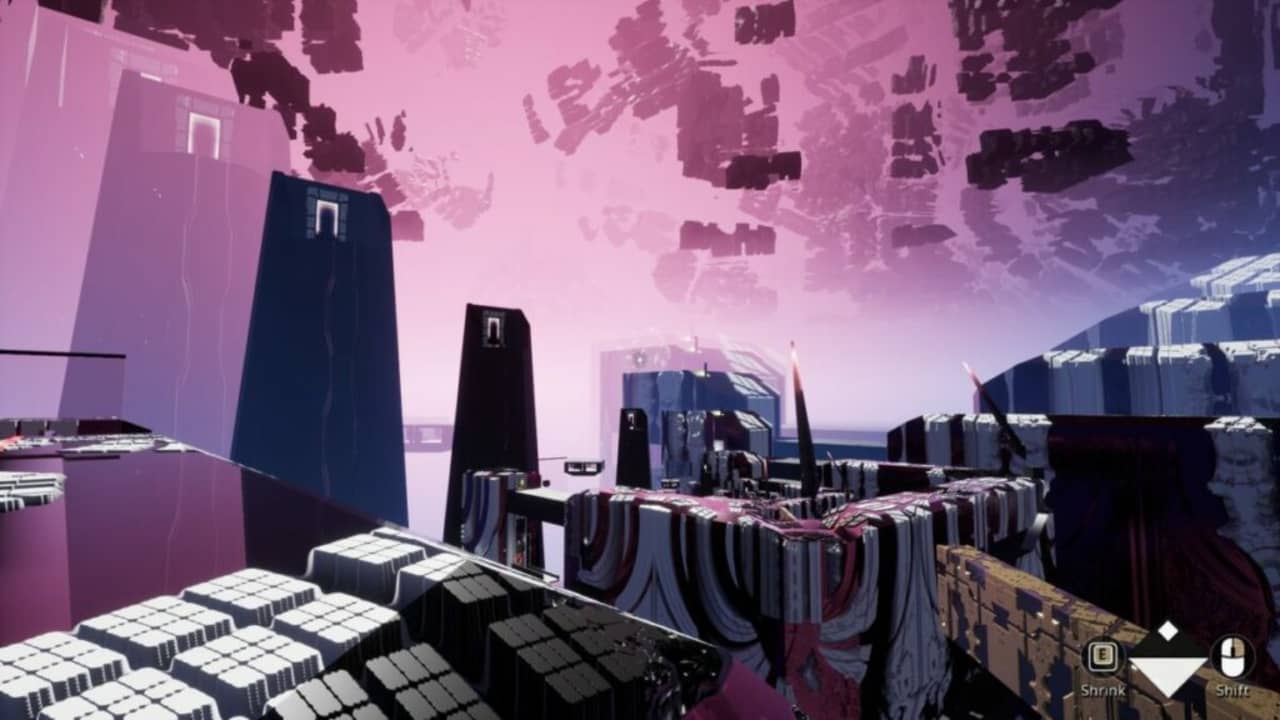
Growing and shrinking
It’s not only the world that can expand and collapse. Recursive Ruin has smaller openings you’ll need to enter, so you’ll need to shrink at those points. When you’ve made it through to the other side, you can grow to your standard height to continue the adventure. It adds a new dynamic to the puzzle game.
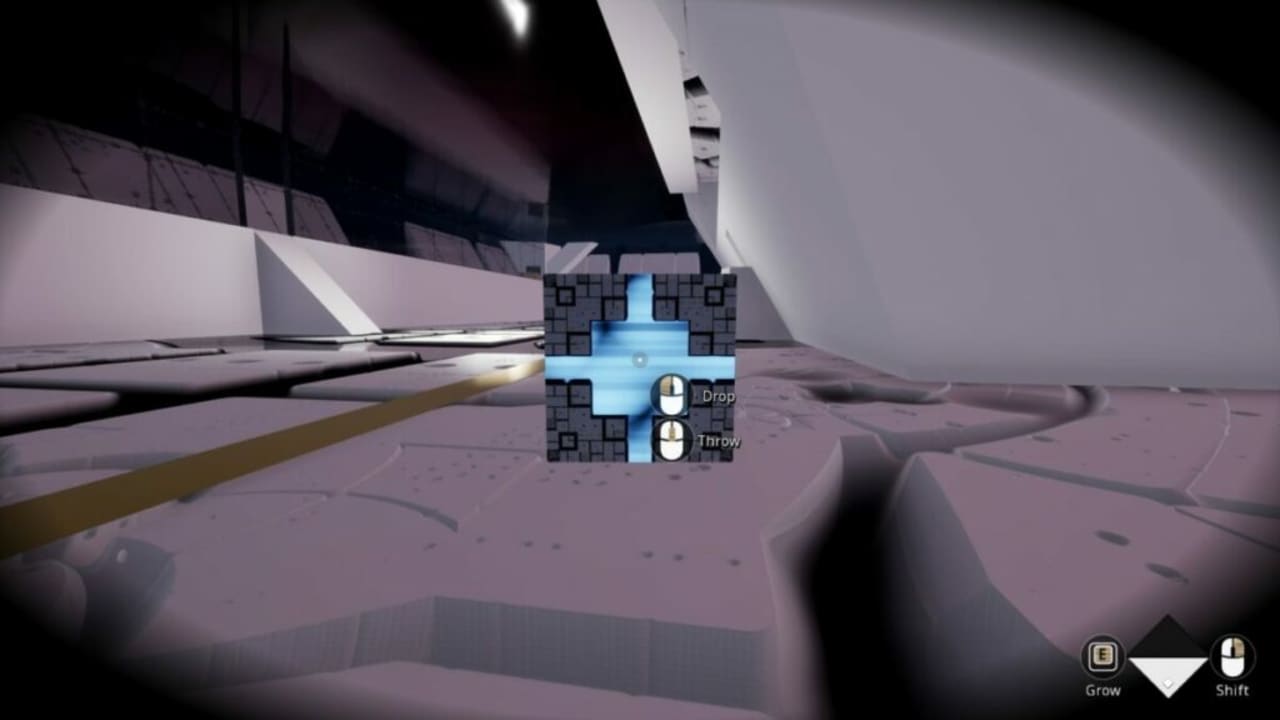
Clues of where to go next in Recursive Ruin
You won’t feel completed deserted in the complex arenas. For the most part, you’ll have slight clues about where to go next. One of the levels had a red line that I followed until I reached an object where I needed to place a block. When I completed that goal, the line became gold.

Interacting with NPCs
You’ll find NPCs along the way in Recursive Ruin. While they spend quite a bit of time telling you about Infinite Realms and Ichor, there are also moments where they give you hints of what they expect of you. I enjoyed the storytelling moments when engaging with them, and it made me feel like I was a hero in their tale.

Linear progression
You’ll soon realize that there’s only one way to play Recursive Ruin. The progression is ultimately linear, as you’ll follow designated paths towards your goal. If you veer off the path, you’ll either end up dead or in an infinite loop. At least you end up at the last checkpoint when you die, and you don’t need to redo the entire puzzle again.
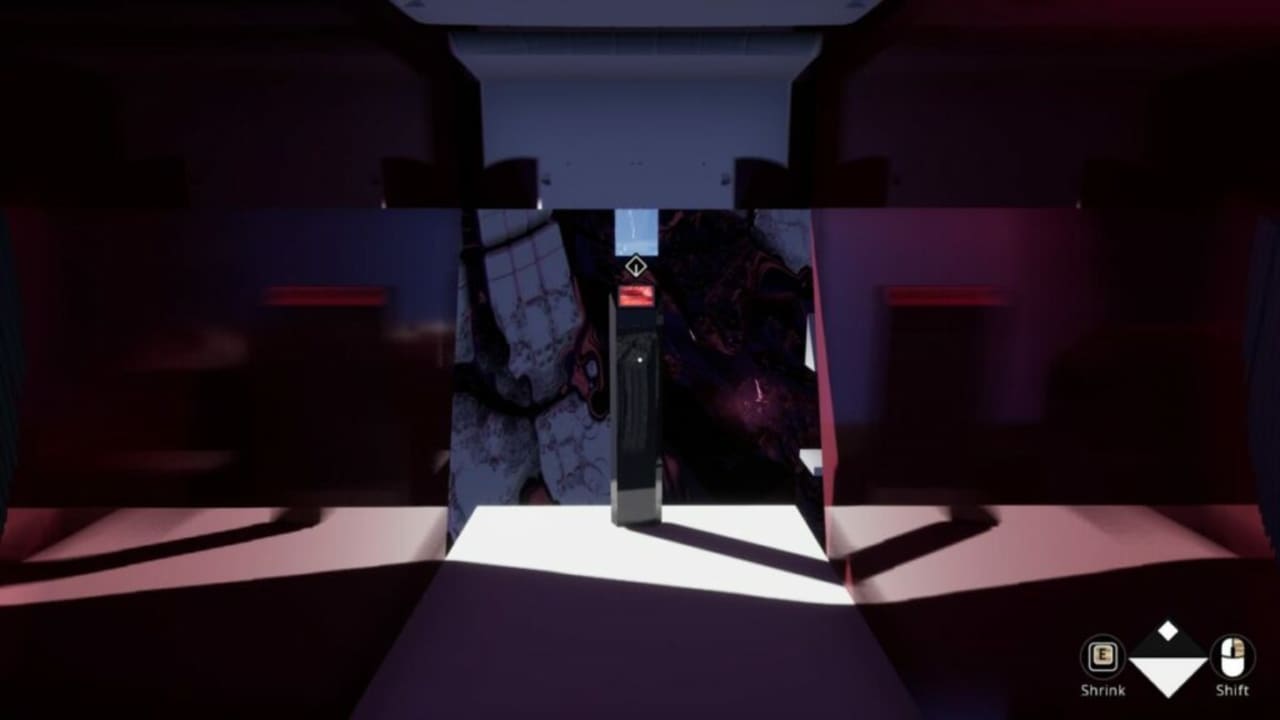
What you’ll need on your PC
The requirements for playing Recursive Ruin on your PC aren’t excessive. There are only seven levels in the game, but you’ll need a decent amount of memory to display the outstanding graphics. Fortunately, I didn’t come across any performance issues. Here’s a quick summary:
- OS: Windows Vista, 7, 8, 10, 11 – 64 bit
- Processor: 3.60GHz Intel Core i3-4160
- Memory: 4 GB
- Graphics: ATI Radeon HD 5870/5850, NVIDIA GeForce GTX 480/570/670
- DirectX: Version 11
- Storage: 1 GB
The beauty of Recursive Ruin will astound you
It’s challenging to find a game that perfectly balances story, game mechanics, visuals, and sound. Somehow, Recursive Ruin does just that. All the elements blend into each other to form a beautiful, brilliant experience.
Outstanding graphics in a complex world
The visuals in Recursive Ruin are absolutely incredible. The colors are bright, and you’ll find a variety of textures to enjoy. Each stage brings new imagery, and it’s always a pleasure to see what will appear next. Even NPCs have fascinating designs.
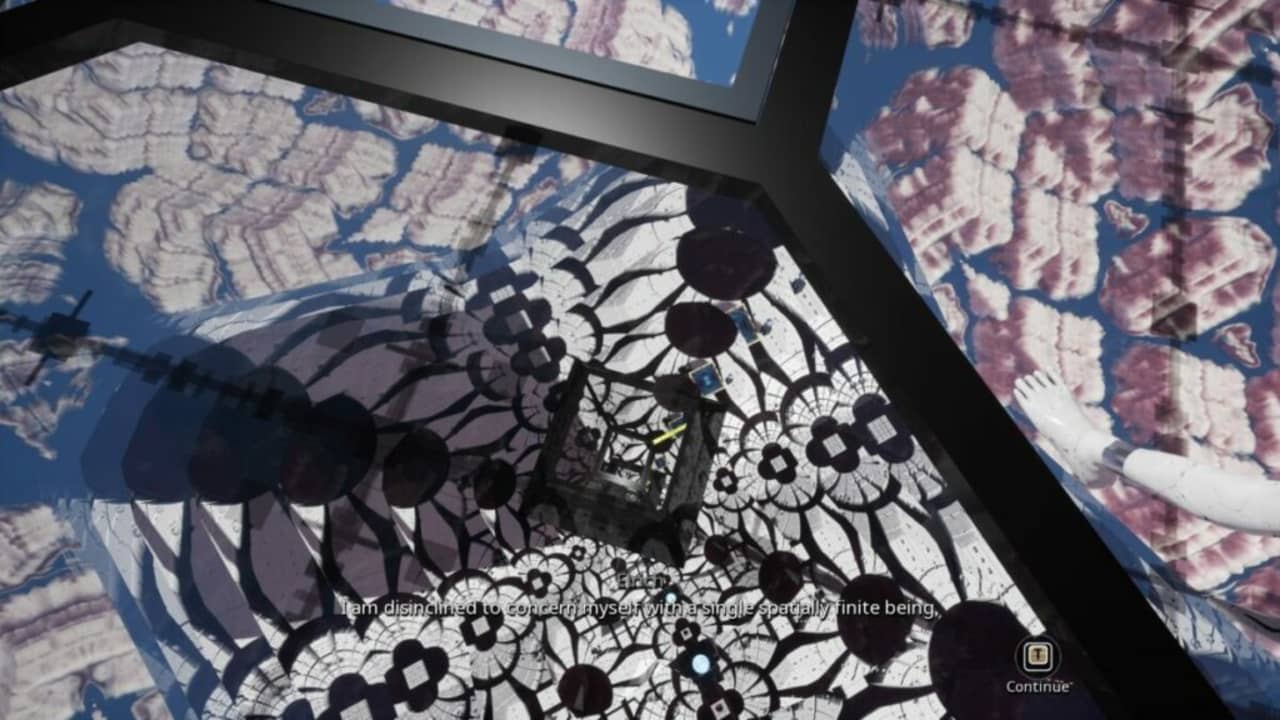
Using visual cues
Most of the visual elements will have clues of some kind, which is what makes the graphics so important. You can follow lines and textures on the walls while keeping an eye out for gaps. If the graphics weren’t as outstanding as they are, Recursive Ruin would be unplayable.
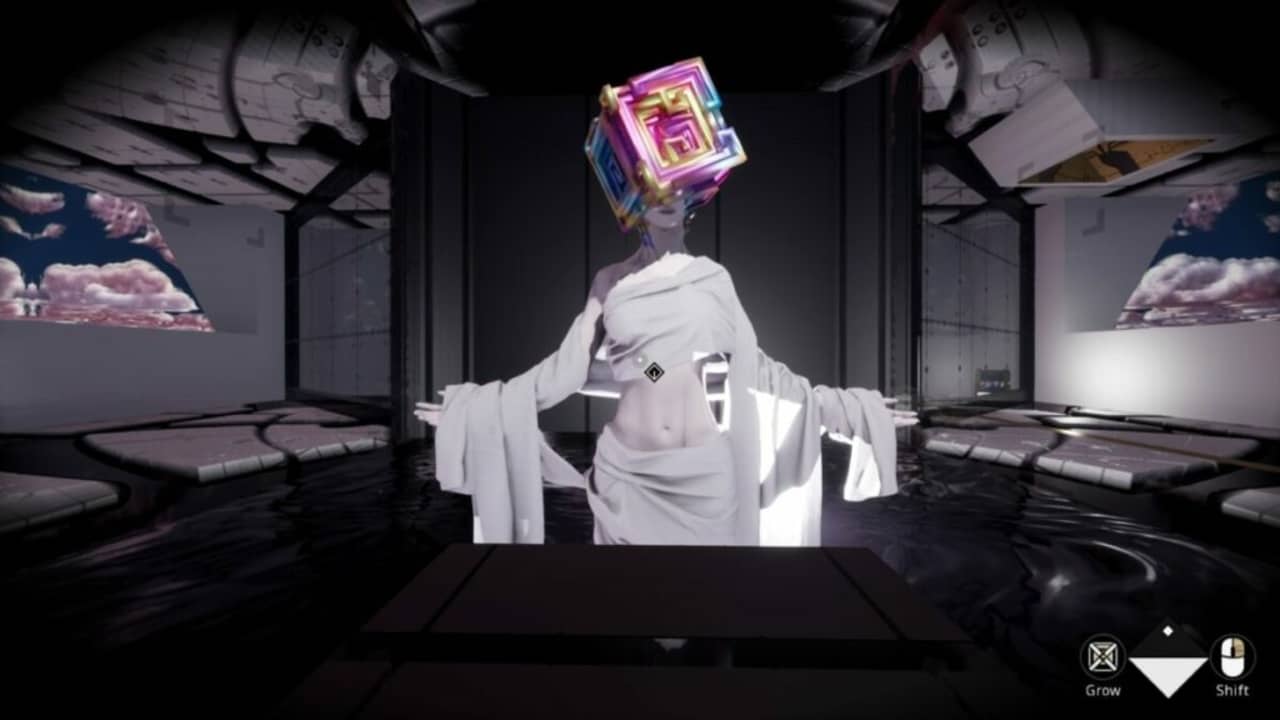
Engaging voice acting and sounds
I love games that have voice acting. Call me lazy, but I hate having to read through walls of text just to get an understanding of what I need to do next. Fortunately, Recursive Ruin has incredible voice acting that immerses you further into the game. I also enjoyed some of the sound elements, especially Behemoth the Cat’s voice.
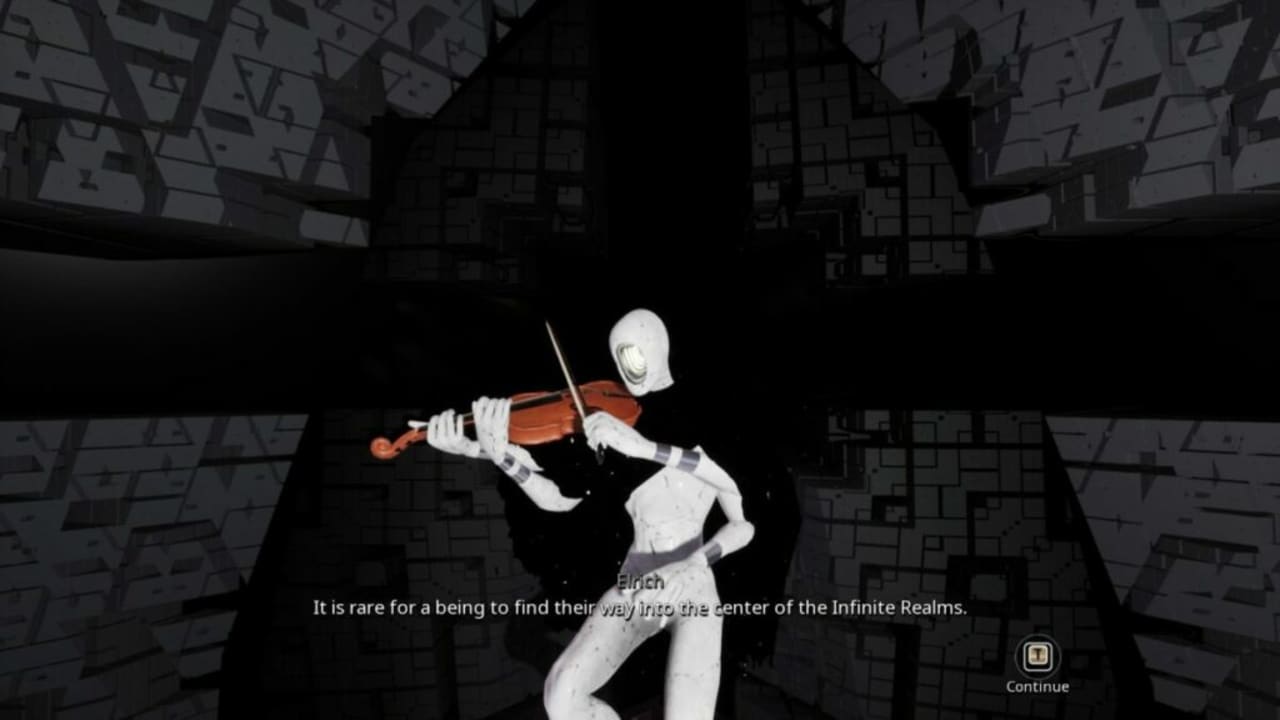
Final Verdict of Recursive Ruin
Recursive Ruin is a brilliant game that looks at the grief of the main character and builds a puzzle around it. By being a hero for a fallen world, he in turn saves himself in a way. I love that it presents these massive levels that form puzzles, and you need to work out how to get from one space to another. It makes you think harder than you planned.
If you enjoy games like this, you may want to read my Mirror Forge review. For another title complex title in the horror genre, check out my Death Stranding Director’s Cut review.
Pros
- Immersive story with a sad tale
- Interactive puzzles for the entire level
- Engaging NPCs with stunning characteristics
- Voice acting for all characters
- Memory wall shares story in pieces
- Relatively lengthy gameplay
Cons
- Story contains sensitive content
Developer: Bit Rot
Publisher: Iceberg Interactive
Game Modes: Story
Platform reviewed: Windows 11 – Steam
